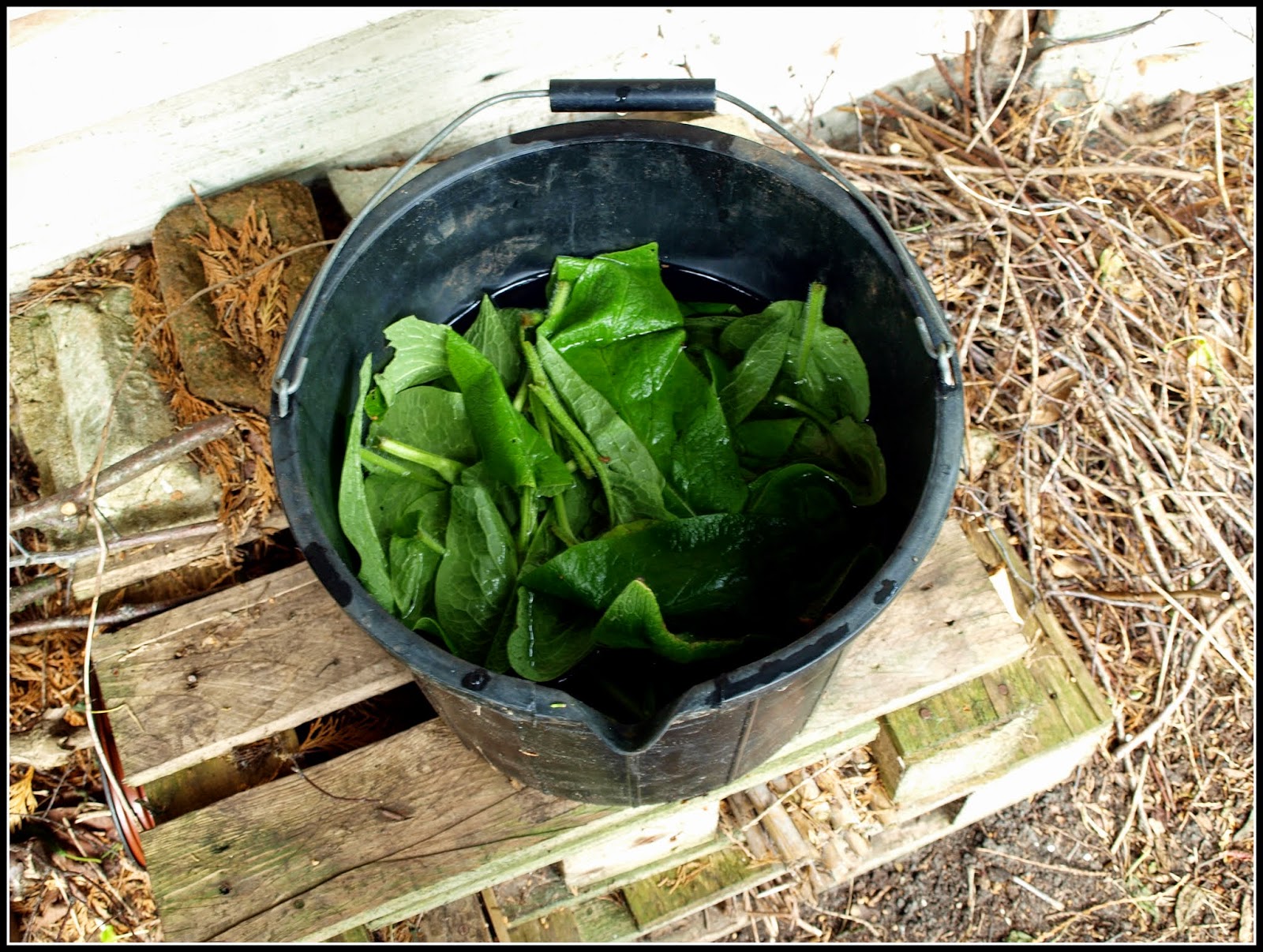First cut some Comfrey (in my case, not a lot - yet), and chop the stems in to small pieces. Put them in a bucket, preferably one that has a lid.
Fill the bucket with enough water to comfortably cover the Comfrey.
Put the lid on. This will stop the mixture being diluted with rainwater. It will also reduce the smell, and the likelihood of small creatures falling in by accident.
Now all you have to do is wait. The Comfrey leaves and stalks will decompose quite rapidly (hence the smell), and become a sort of thick gloopy substance much more akin to soup than to tea. I find that making it in a bucket normally takes 3 to 4 weeks. The resultant liquid if rich in the sort of nutrients that are enjoyed by fruiting plants such as tomatoes, chillies and peppers - and probably Courgettes (as if they needed any encouragement). My chillies and peppers would certainly welcome a dose of it right now!
This plant is one of my Turkish Sweet Peppers. Its smaller than I had hoped it would be at this stage of the year, and so far it has only set two fruit. The battering it received at the hands of last week's hailstorm certainly didn't help, but since then we have had a fair bit of sunshine, so I'm hoping they will all buck up soon.
By the way, even if you don't have any Comfrey growing in your garden, you can often find it growing on roadside verges, where it is available to those who want it. Years ago, I used to go out foraging for it at this time of year, and the plants currently in my garden are descended from the harvest I brought home in that way. Comfrey roots very easily from stem-cuttings, so it is seldom difficult to establish a patch of your own.
When the "Comfrey Tea" is brewed, distribute it carefully around the base of your plants using a watering-can without a rose. If you use a rose it will rapidly become clogged with fibres. When made by my method it is relatively weak, so it doesn't need diluting.
I just wish I had more of the stuff, so I will be doing what I can to propagate some more plants.






Well, my 'science' is just as simple as yours. As long as it works.
ReplyDeleteDon't you dilute your gloop. Mark?
ReplyDeleteI remember making that at my last garden when I had comfrey. Part of me is happy not to do it any more as it really does smell.
ReplyDeleteI don't know what comfrey is. Will have to look it up and see if we have any here.
ReplyDeleteYou are brave to risk the smell in a moderate sized garden? Comfrey grows in the managed wild not far from where I live in the RSPB reserve round Radipole Lake.
ReplyDeleteWe've now got quite a lot of comfrey naturalising in the borders around our small allotment site.
ReplyDeleteWorth the attractive flowers alone but I've also started a brew this week.I'm letting the trug fill up with some rainwater as I only used a couple of watering cans on a large cutting of the herb.
good advice if your healthy plants are anything to go by
ReplyDeleteOh thank goodness it's not actually 'tea' and I'd have to drink it! Which was my first thought until reading further.
ReplyDeleteGreat advice...now I'll have to look out for it on my walks. I'm sure I've seen it nearby ;)
My plants are going to love me for it by the sound of it...but not sure I'm going to like that pong.